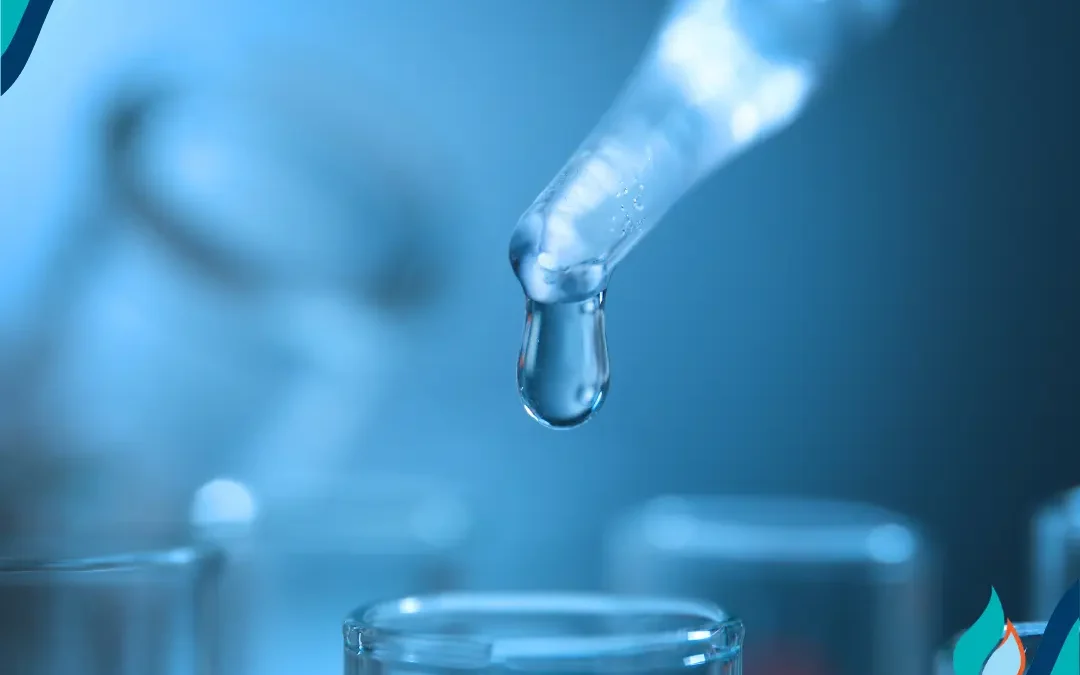Water quality plays an important role in everyday life, having a significant impact on both our health and our homes. Two key factors that affect overall water quality are Total Dissolved Solids (TDS) and water hardness. Although these terms are often used interchangeably, they actually refer to different properties of water. Understanding the link between them is important for effective water quality management.
Here, we’ll take a closer look at what total dissolved solids and water hardness are as well as how they’re connected. Then, we’ll explain some helpful strategies for managing TDS and water hardness so you can enjoy high-quality water at home.
What Are Total Dissolved Solids (TDS)?
Total Dissolved Solids (TDS) include all inorganic and organic substances that are dissolved in water. This encompasses things like minerals, salts, metals, cations, and anions. TDS is usually measured in parts per million (ppm) and can be determined with a TDS meter or through laboratory analysis.
Common sources of TDS in water include:
- Natural sources like mineral springs
- Agricultural runoff
- Urban runoff
- Industrial wastewater
- Household wastewater
- Chemicals used in water treatment processes
High TDS levels can affect your water’s taste and smell, as well as its color. Fortunately, not all dissolved solids are harmful to human health. However, if your water has a high TDS concentration, there COULD be harmful contaminants present. The only way to know for sure is to have your water tested.
Effects of Low vs. High Total Dissolved Solids (TDS) in Water
When it comes to the Total Dissolved Solids (TDS) in your water, both low and high levels can present unique challenges. Understanding these effects is crucial for maintaining water quality that is both healthy and pleasant to consume.
High TDS Levels
- Hard Water and Scaling: High TDS often leads to hard water, which can cause scaling on appliances and fixtures. This buildup not only affects water flow but also diminishes the efficiency and lifespan of devices.
- Taste and Appearance Issues: Water with elevated TDS levels may appear discolored or cloudy. It can also leave an unpleasant salty or metallic taste, making it less enjoyable to drink.
- Corrosion Concerns: The presence of high dissolved solids can speed up the corrosion of pipes and fixtures. This may lead to costly repairs and maintenance over time.
Low TDS Levels
- Lack of Minerals and Nutrients: On the flip side, low TDS can strip water of essential minerals and nutrients. Since these elements benefit bodily functions, their absence might reduce the nutritional value of your water.
- Flavor Deficiency: Water with low TDS might taste flat or “dead.” This lack of flavor can make it less appealing, potentially reducing your hydration habits.
In summary, both high and low TDS levels bring about specific issues, from taste alterations and corrosion to nutrient depletion. Maintaining a balanced TDS level can help ensure that your water is both healthy and enjoyable to drink.
What Is Water Hardness?
Water hardness is primarily a measure of the concentration of calcium and magnesium ions in water. Hard water is characterized by higher levels of these minerals, while soft water has lower levels. Water hardness is usually expressed in milligrams per liter (mg/L) or grains per gallon (gpg).
There are two types of water hardness:
Temporary Hardness: This is caused by dissolved bicarbonate minerals that can be precipitated out by boiling the water.
Permanent Hardness: This is caused by non-bicarbonate minerals, such as sulfates and chlorides, that cannot be removed by boiling.
Hard water can cause scale buildup in pipes and appliances, diminishing their efficiency and lifespan. It also reduces the effectiveness of soap and detergent, leading to residue buildup and decreased cleaning performance.
TDS and Water Hardness: How Are They Connected?
While TDS and water hardness measure different aspects of water quality, they are interconnected:
- Common Components: The calcium and magnesium ions that contribute to water hardness are also part of the total dissolved solids. Therefore, hard water typically has a higher TDS level due to the presence of these dissolved minerals.
- Measurement Overlap: TDS meters measure the overall concentration of dissolved solids, which includes the calcium and magnesium ions contributing to hardness. As a result, a high TDS reading can sometimes indicate hard water, although TDS includes all dissolved substances, not just those causing hardness.
- Water Sources: Groundwater sources, which are often higher in TDS due to the dissolution of minerals from rocks and soil, tend to be harder compared to surface water sources. This is because groundwater travels through mineral-rich layers, picking up calcium and magnesium along the way.
- Treatment Methods: Both high TDS and hard water can be addressed through water treatment methods like reverse osmosis, ion exchange, and water softening. These treatments can reduce the levels of dissolved solids and the concentration of calcium and magnesium, improving both TDS and hardness levels.
What Do High Levels of TDS and Water Hardness Indicate?
High TDS levels indicate that your water contains an increased amount of dissolved substances, including minerals, salts, metals, and sometimes even trace organic compounds. While not all of these are necessarily harmful, a higher TDS reading can affect the overall taste, odor, and appearance of your water. In some cases, elevated TDS may hint at the presence of contaminants that could impact water safety or health, which is why regular water testing is important.
When it comes to water hardness specifically, high levels mean your water contains significant concentrations of calcium and magnesium ions. This doesn’t just influence taste—it can also make everyday chores more challenging. Hard water often leaves soap scum on sinks and dishes, causes scale deposits in plumbing and appliances, and may reduce the efficiency of water heaters, dishwashers, and washing machines. Over time, this scaling can lead to increased maintenance costs and shorten the lifespan of your appliances.
In summary:
- High TDS points to a greater mix of dissolved solids—some of which may impact health, taste, or both.
- High water hardness is mostly about lots of calcium and magnesium, resulting in mineral buildup and cleaning frustrations around the house.
Why Distinguishing Between TDS and Hardness Matters
Knowing the difference between TDS and water hardness will help you select the most effective treatment for your home’s water. Since TDS encompasses all dissolved substances—including, but not limited to, the calcium and magnesium ions responsible for hardness—the treatment you choose depends on the specific issue you want to address.
If you’re dealing with elevated TDS levels, a system like reverse osmosis, which targets a broad range of dissolved solids, may be the right fit. On the other hand, if your main concern is hard water (with all those telltale spots and scale deposits), a water softener designed specifically to remove calcium and magnesium might be what you need.
In short, pinpointing whether your water issues are caused by high TDS, hardness, or both allows you to avoid unnecessary expense and ensures your solution directly addresses the problem—saving your appliances, your budget, and your peace of mind.
How to Manage TDS and Water Hardness: 4 Simple Steps
To manage TDS and water hardness effectively, consider the following:
- Testing: Regularly test your water for TDS and hardness. Home testing kits, professional laboratory services, and your local water treatment company can provide accurate readings and help you understand what’s in your water.
- Water Softening: If your water is hard, consider installing a water softener. These systems use ion exchange to replace calcium and magnesium ions with sodium or potassium ions, reducing hardness. Alternatively, you can choose Portable Exchange Tank Service, or soft water delivery. This service delivers soft water to your home in portable tanks that are delivered and exchanged on a predetermined schedule based on your specific needs.
- Reverse Osmosis: For high TDS levels, reverse osmosis (RO) systems can be effective. They filter out a wide range of dissolved solids, including those contributing to hardness. Even if your water doesn’t contain harmful contaminants, an RO system can be very useful for improving the taste and smell of your drinking water.
- Regular Maintenance: Maintain your water treatment systems according to manufacturer guidelines to ensure they operate efficiently and continue to provide high-quality water.
Manage Total Dissolved Solids (TDS) and Water Hardness with an Affordable Water Treatment System From CalSoft Water
Understanding the relationship between Total Dissolved Solids (TDS) and water hardness is essential for managing water quality. While they measure different characteristics, their overlap means that managing one often affects the other.
Regular testing and appropriate water treatment solutions can help ensure that your water is safe, palatable, and gentle on your appliances. By taking proactive steps, you can improve the quality of your water, leading to better health and a more efficient household.
If you’re ready to start improving your home’s water quality, contact us today. Our water treatment experts can test your water and determine the best water treatment system to meet your household’s needs. Healthy, great-tasting water is just a phone call away!

